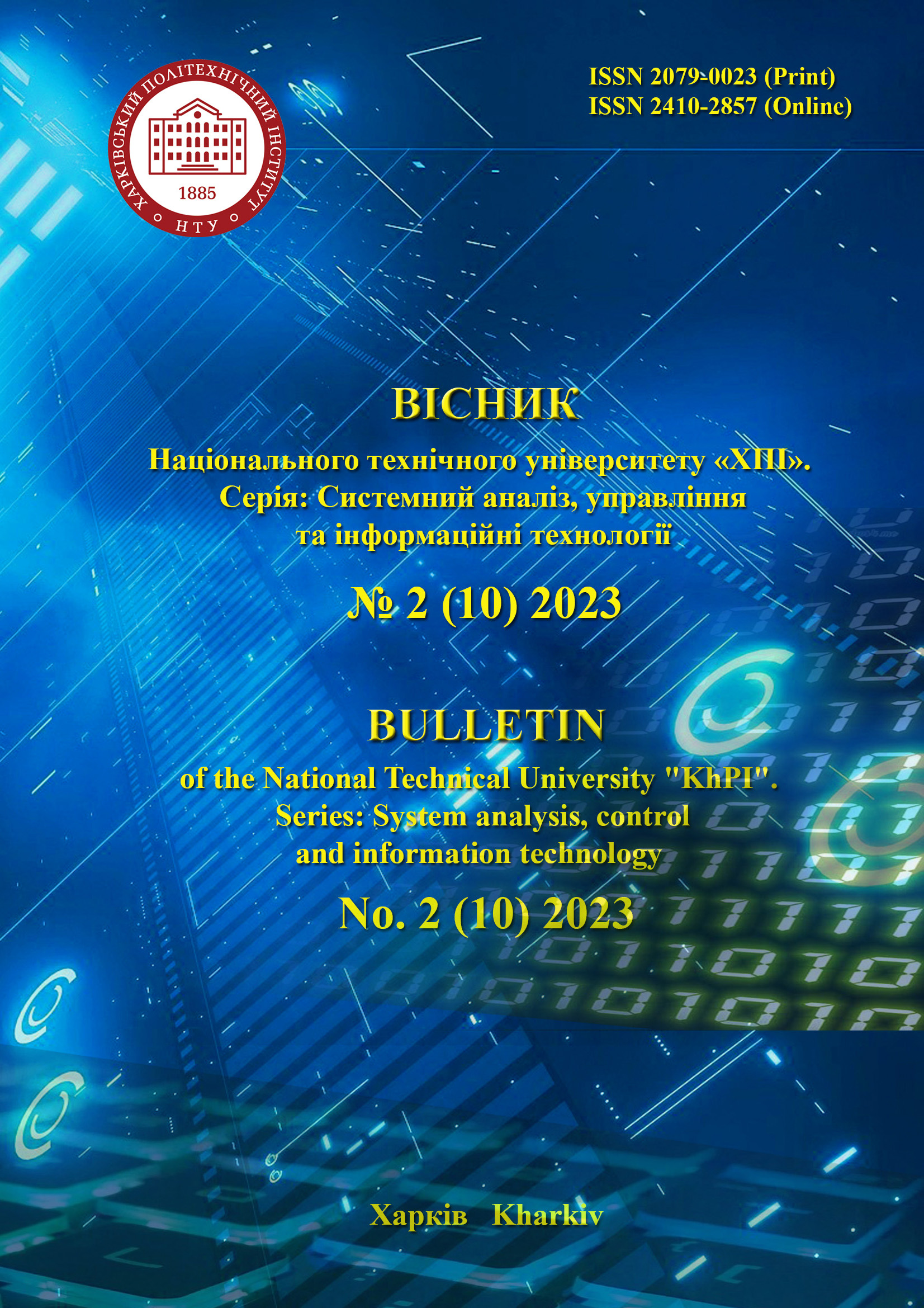APPLICATION OF BAYESIAN REGULARIZATION FOR IMPROVING THE QUALITY OF ELECTRICAL ENERGY IN THE ELECTRICAL SUPPLY SYSTEM
DOI:
https://doi.org/10.20998/2079-0023.2023.02.03Keywords:
neural network, Bayesian regularization learning algorithm, input matrix, target matrix, set of taples, search optimization methods, power supply systemAbstract
The possibility of using neural networks in the field of the energy coefficients correction of a power supply system with uneven load in phases is being studied. This need is justified by the fact, that the calculation of the necessary parameters of the symmetry-compensating device was previously based on the Nelder – Mead search optimization method. Search optimization performing is computationally expensive, takes long computation times, and may calculate anomalous values. The article develops the idea of using technology for predicting the parameters of a symmetry-compensating device, based on neural network modeling using Bayesian regularization. For a given set of initial data, the best selected configuration turned out to be a neural network of two layers, implemented in the MATLAB package using the machine learning tool Neural Network Toolbox. The network input parameters are a set of tuples, consisting of load values in each of the three phases of the power supply system, which are resistive-inductive in nature. There are six input quantities in total (load resistance and inductance values in each of the three phases) and all their values are different, which causes current asymmetry in the network and reactive power. The target matrix is formed from tuples, consisting of three values, which are the parameters of the symmetrical compensating device, calculated by the optimization method, in such a way as to compensate reactive power and to balance currents in the network. The number of data tuples, required to train a neural network was determined empirically. During the experiments, the optimal number of neurons in the neural network was also revealed. The use of the generated neural network to calculate the parameters of the symmetry-compensating device determined approximate solutions is comparable in accuracy to the values, found by optimization methods. With the help of the generated neural system, adequate quasi-solutions for calculating the parameters of the symmetry-compensating device were determined, which, in case of calculation, using the optimization method, led to anomalous values, that didn’t optimize the energy coefficients of the power supply system to the required extent. Also, such neuropredictions protect the system from receiving excessive high parameters of symmetry compensating device, which can be obtained with an optimization approach.
References
Yagup E. V. Raschet parametrov ustroystva kompensatsii reaktivnoy moschnosti s ispolzovaniem modeli i poiskovoy optimizatsii [Calculation of parameters of a reactive power compensation device using a model and search optimization]. Zbirnyk naukovykh prats Ukrainskoi derzhavnoi akademii zaliznychnoho transportu [Collection of scientific works of the Ukrainian State Academy of Railway Transport]. 2014, no. 150, pp. 115 –120.
Yagup E. V. Modelirovanie nesimmetrichnoy sistemyi elektrosnabzheniya s ispolzovaniem optimizatsii dlya opredeleniya parametrov simmetriruyuschego ustroystva [Modeling of an unbalanced power supply system using optimization to determine the parameters of a balun]. Zbirnyk naukovykh prats Ukrainskoi derzhavnoi akademii zaliznychnoho transportu [Collection of scientific works of the Ukrainian State Academy of Railway Transport]. 2016, no. 161, pp. 130–138.
Yagup E. V., Yagup V. G. Issledovanie rezhimov polnoy kompensatsii reaktivnoy moschnosti v trehfaznoy sisteme elektrosnabzheniya. [Research of full reactive power compensation modes in a three-phase power supply system]. Elektrotekhnika i elektromekhanika [Electrical engineering and electromechanics]. 2019, no. 2, pp. 61–65.
Hu W., Liu B., Gomes J. Strategies for Pre-training Graph Neural Networks. URL: https://arxiv.org/abs/1905.12265 (access date: 01.11.2023).
Dahl G., Jaitly N., Salakhutdinov R. Multi-task neural networks for QSAR predictions. URL: https://arxiv.org/abs/1406.1231 (access date: 01.11.2023).
Graves A., Wayne G., Danihelka I. Neural Turing machines. URL: https://arxiv.org/abs/1410.5401 (access date: 01.11.2023).
Haykin S. Neyronnyie seti. Polnyiy kurs. [Neural networks. A comprehensive foundations]. Moscow, Vilyams Publ., 2006. 1104 p.
Haykin S. Neural networks. A comprehensive foundations. McMillan College Publ.Co. N.Y. 1994. 696 p.
Lyuger F. Iskusstvennyiy intelekt: strategii i metodyi resheniya slozhnyih problem [Artificial Intelligence: Strategies and Methods for Solving Complex Problems]. Moscow: Vilyams Publ., 2003. 864 p.
Xianjun Ni Research of Data Mining Based on Neural Networks. World Academy of Science, Engineering and Technology. 2008, vol. 39, pp. 381–384.
Wyner A. J., Olson M., Bleich J., Mease D. Explaining the success of adaboost and random forests as interpolating classifiers. The Journal of Machine Learning Research. 2017, vol. 18, no.. 1, pp. 1558–1590.
Opper M., Archambeau C. The variational gaussian approximation revisited. Neural Computation. 2009, vol 21 (3), pp. 786–792.
Downloads
Published
How to Cite
Issue
Section
License

This work is licensed under a Creative Commons Attribution 4.0 International License.
Authors who publish with this journal agree to the following terms:
- Authors retain copyright and grant the journal right of first publication with the work simultaneously licensed under a Creative Commons Attribution License that allows others to share the work with an acknowledgement of the work's authorship and initial publication in this journal.
- Authors are able to enter into separate, additional contractual arrangements for the non-exclusive distribution of the journal's published version of the work (e.g., post it to an institutional repository or publish it in a book), with an acknowledgement of its initial publication in this journal.
- Authors are permitted and encouraged to post their work online (e.g., in institutional repositories or on their website) prior to and during the submission process, as it can lead to productive exchanges, as well as earlier and greater citation of published work (See The Effect of Open Access).


